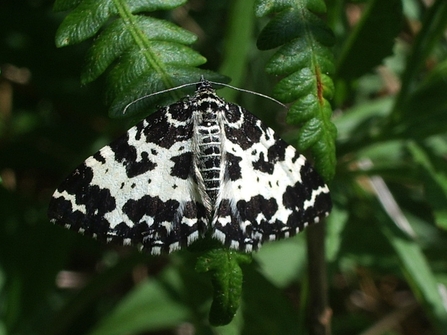
Argent and sable moth © Martin Chadwick
Join by 30 January to get 3 months free membership!

Argent and sable moth © Martin Chadwick
Despite their ecological importance and often splendorous appearance, moths tend to be looked on less favourably than their relatives, the butterflies. As an example, on the Greek island of Rhodes there is a nature reserve that hosts huge numbers of Jersey tiger moths. The reserve’s name is the Valley of the Butterflies – presumably the Valley of the Moths would be less appealing to visitors. Butterflies are just better PR!
But moths are wonderful creatures, many of them as elegant as the finest butterflies. They play vital roles in the ecosystem as key pollinators and natural pest controllers. Their place in the food chain is extremely important, as they are prey for all manner of wildlife, including garden birds such as blue tits.
The English names of moths can be fascinating, and greatly add to their appeal. Species recorded in Cumbria include red-necked footman, pale brindled beauty, argent and sable, true lover’s knot, heart and dart, canary-shouldered thorn, and tawny-barred angle.
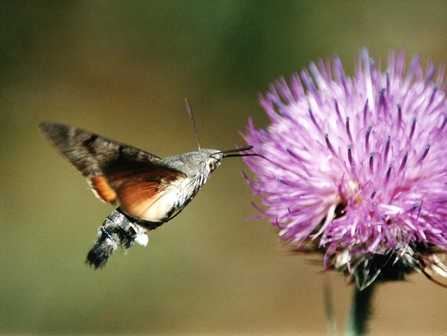
Hummingbird hawkmoth © Dave Appleton
Among the pin-ups of the moth world, the hummingbird hawkmoth (above) has orange hindwings and often visits gardens in Cumbria on a summer’s day, where it feeds on nectar. Appropriately named, with its darting flight and long proboscis, at first glance many people think they have seen a hummingbird.
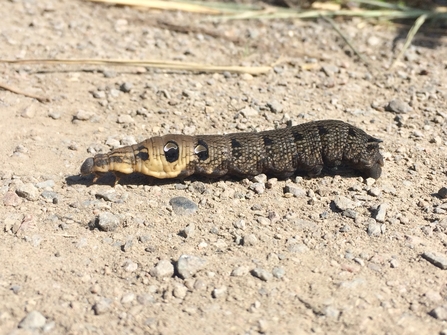
Elephant hawkmoth caterpillar ©Tom Hibbert
Found in parks, gardens and woodland edges, the elephant hawkmoth is a nocturnal, golden olive and pink moth. To see the caterpillars – which look like elephants’ trunks with black eyespots (see above) – look closely at willowherb, fuchsia and bedstraw between July and September.
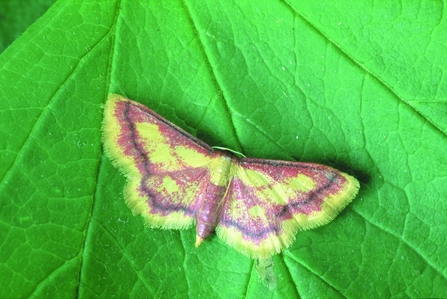
Purple bordered gold moth © Cumbria Wildlife Trust
One of the jewels in southern Cumbria’s crown is a stunning rarity known as the purple-bordered gold moth (above). This small moth is at the northern edge of its range here, and is found in fens, heaths and mosses, in June and July. Although mainly nocturnal, the bright flash of its wings can be seen during the day when it is disturbed from the vegetation.
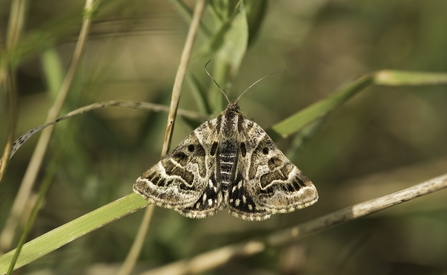
Mother Shipton moth © Janet Packham
Even among the small, brown moths, there are some visual delights. The day-flying Mother Shipton can be seen taking short, rapid flights over grassland in the early summer sunshine. This intriguingly patterned moth was named after a legendary Tudor 'witch', as the forewing markings were thought to resemble the face of an old crone.